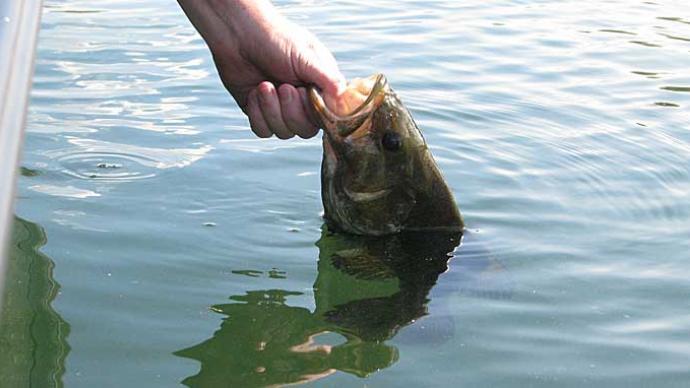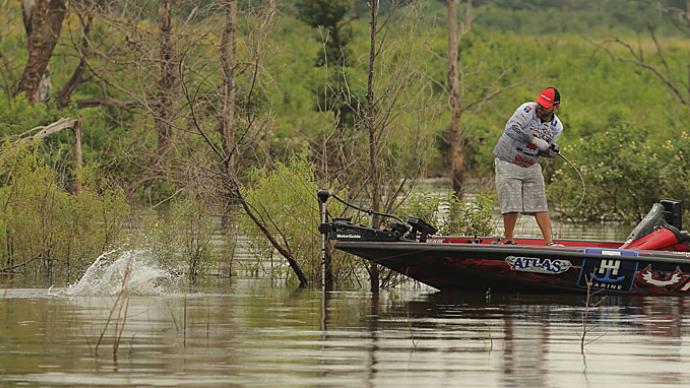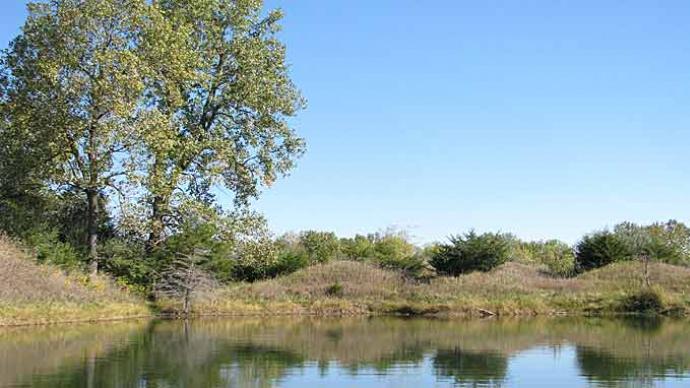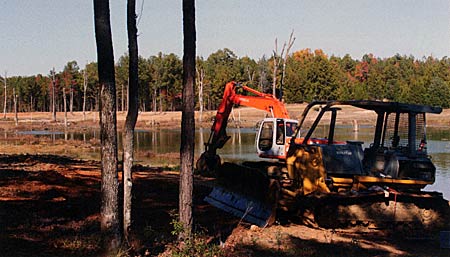
Each year, I receive hundreds of phone calls and emails about ponds. The topics often change with the season, but I can comfortably say that two of the most common calls involve either problems with weeds or skinny, slow-growing fish. When these problems arise, a handy tool to have in your back pocket is the winter drawdown. The concept is simple but the implementation often is more difficult, and there are times to use it and times when you should not. In this edition of Empirically Speaking we'll explore this effective yet often misused management action.
A winter drawdown involves lowering the water level in the pond in late-October or early-November to about one-half the original pond volume and keeping it low for three to four months. This is easiest to do in ponds that have mechanical drains, standpipes that can be adjusted for height, flashboard risers, or other form of adjustable water control structure. Some ponds can be fitted with a standpipe siphon, smaller ponds can be pumped down, or siphoned using long hoses with variable success. In these situations, more water must be released after each rain event that adds to the pond volume.
Usually water levels are lowered enough to expose 35 to 50 percent of the pond bottom. This is about a three to four-foot drop in water level, but will vary depending upon topography and design of the pond. Minimum pool level should be reached by mid- to late-November, and water level should be maintained at this low level until February. As spring approaches, valves can be closed or standpipes raised to their full pond level, allowing spring rains to fill the pond.
Water level drawdown during winter months is an excellent management technique to control many nuisance weed species in ponds. This is especially true for submerged species that do not tolerate drying and freezing. Problem species like pondweeds and hydrilla do not handle dry and cold conditions and will die back. More-tolerant species, like cattails and primrose, are not as affected by drying and freezing, but they can be treated more easily with herbicides when they are dry and exposed.
While water levels are lower, it may be a good time to deepen the shoreline to further prevent weed problems. Ponds should have moderately sloping shorelines that drop to at least three feet deep so that sunlight does not reach the bottom. Plants need sunlight to grow, and very little sunlight reaches three feet deep in productive ponds. If the shore sufficiently dries out while water levels are down, heavy equipment can be used to deepen shorelines. This will reduce the likelihood of weeds returning. Try to create a slope of about 30 degrees. Slopes that are more gradual create too much shallow water, encouraging weed growth, and steeper slopes are more prone to erosion and can be dangerous if someone accidentally falls into the pond.
Another benefit of water level reduction is that it allows terrestrial vegetation to grow on exposed areas during winter. Some species will grow voluntarily, but for best results, you can spread seeds of cool season terrestrial plants on exposed shoreline. Species like winter wheat and annual ryegrass will grow quickly, protecting shorelines from erosion and providing a bonus food plot for area wildlife. When water levels return to full pool in the spring, these grasses and other terrestrial plants will be submerged and provide temporary shelter and feeding opportunities to newly-hatched fish.
Winter drawdown also can be beneficial as a fish management technique, especially in ponds containing Largemouth bass and bluegill. By reducing water level and pond surface area, forage fish are driven out of shallow water refuges and will concentrate in open water, making them more available for bass to eat. Bass eat many of the bluegill during the winter, leaving fewer small bluegill to compete for food resources in the spring when the pond fills. Thus, the remaining bluegill grow faster and larger. Likewise, concentrating bluegill makes bass feed more successfully, resulting in satiated and faster- growing bass. Plus, when the pond rises, you'll see significant spawns of all species.
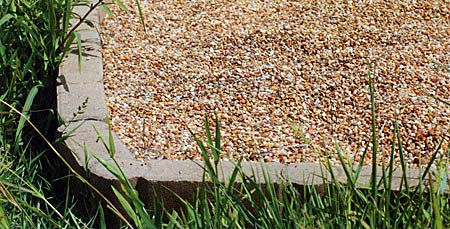
Routine annual drawdowns can be used to help maintain a healthy bass and bluegill fishery. Drawdowns can also be used to correct over-abundant slow-growing bluegill populations, especially when combined with stocking more bass predators. If possible, stock at least 30 larger (8-12 inch) bass per acre before lowering the pond. These small bass will eat up many of the small bluegill that have been concentrated by the drawdown, which will help improve the balance between predators and prey.
There is an important caveat, however. Don't use a winter drawdown if you have too many small skinny bass. Drawdowns can make bass-crowded situations worse, because the water level reduction concentrates the already starved bass into a small area with too few prey. The few remaining bluegill are forced from their hiding places and enter a gauntlet of hungry bass. When the pond refills in the spring, you may not have enough forage fish left to spawn and produce prey for your bass.
If you have a bass-crowded pond, you need to correct the problem, and not use winter drawdowns until pond balance is restored. Liberal harvest of small bass is required. Take out at least 35 small bass (less than 13 inches) per acre and keep a close eye on the pond the following year. More harvest will likely be necessary. In severe bass-crowded situations, it is usually best to reclaim (poison out or drain) the pond and start over.
Lowering the water level in winter also provides a good opportunity to do repairs on piers, docks, and boat ramps, as well as minor dam repairs and shoreline renovation. Fish attractors, such as brush tops and gravel beds, can be more easily installed while the water is down. You can use dirt from the shoreline-deepening operation to build earthen piers at various locations around the pond. These piers increase the shoreline area of the pond and provide increased access for anglers. This would also be an ideal time to install or conduct maintenance on aerators or destratification systems.
Drawdowns should be used only in the winter, never in summer! Water temperatures are cooler in the winter and hold much more oxygen, and metabolism of pond life is lower at cooler temperatures. Therefore, oxygen issues rarely arise during the winter. In summer, however, increased metabolic activity and lower dissolved oxygen saturation (the amount of oxygen water can hold) in warm water increase risks of a low oxygen event. This would be a bad time to concentrate twice as many fish into half as much water.
Keep these ideas in mind this fall. Most people think of pond fishing and management as a warm weather affair, but there is much to do (and catch) during the cooler months of the year. This effective winter management technique requires relatively little effort and offers many benefits to the pond owner. Winter drawdown can be a useful tool for the farm pond manager if done properly. It poses no threat to the fish population and costs nothing if the pond is equipped with a water control structure. Watershed ponds will refill naturally with spring rains the following spring, and you will have a less-weedy pond, with hopefully bigger, healthier fish.
Reprinted with permission from Pond Boss Magazine

